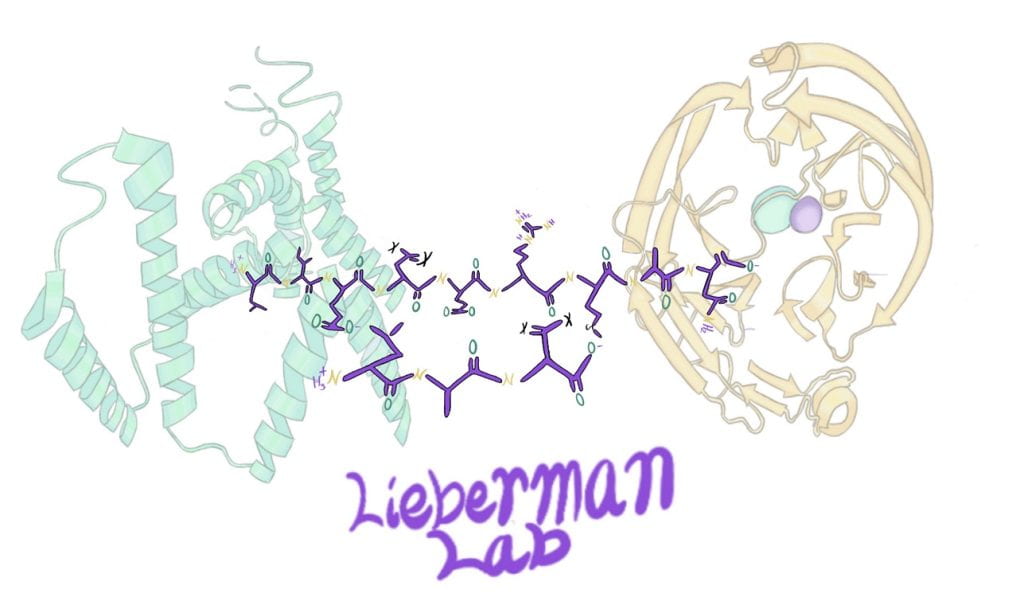
The Lieberman lab uses biophysical, structural, and chemical biology approaches to characterize proteins involved in conformational disorders and ameliorate the misfolding phenotype. We are the only (bio-macromolecular) crystallographers at Tech!
One major research project in the lab is the characterization of myocilin, a protein implicated in familial cases of the prevalent ocular disorder glaucoma. The lab has made central contributions to the current molecular understanding of myocilin structure, function, and disease pathogenesis once thought to be largely intractable. The lab solved the first de novo crystal structure of the key myocilin olfactomedin domain, and discovered similarities between myocilin-associated glaucoma and amyloid diseases that explain disparate observations in the literature. This research is leading to exciting opportunities to discover novel disease-modifying glaucoma therapeutics, better reagents to study myocilin in the eye, as well as innovative research directions to clarify the still-elusive biological function of myocilin.
A second major project involves the study of membrane-spanning proteolytic enzymes that are related to those involved in producing amyloid-beta associated with Alzheimer disease. The group developed the first continuous assay for an intramembrane aspartyl protease (IAP), which, combined with high resolution proteomics mass spectrometry, is being used to answer major open questions about substrate specificity, mechanism, and inhibition, in unprecedented chemical detail. This project also involves characterization via small angle neutron scattering, a cutting edge method to probe the structure of membrane enzymes in their native lipid environment.
